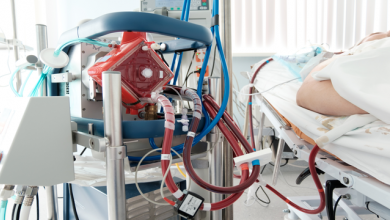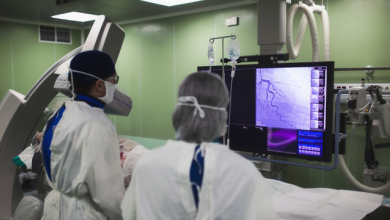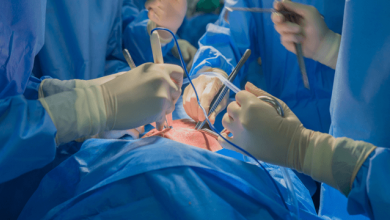Search results
Author(s):
Ahmed M Alabbady
,
Ahmed S Abdul-Al
,
Kimberly A Skelding
Added:
3 years ago
The introduction of percutaneous coronary angioplasty in 1977 by Dr Andreas Grüntzig1 was one of the most remarkable achievements in the cardiology realm, opening the door to numerous advancements in percutaneous coronary interventions (PCIs). Due to advances in PCI techniques over the past four decades, catheters along with four generations of coronary stents have dramatically changed the…
View more
Author(s):
Charles Simonton
,
Craig Thompson
,
Jason R Wollmuth
,
et al
Added:
3 years ago
Coronary artery disease (CAD) is a leading cause of morbidity and mortality globally, despite advances in medical and preventive therapy. It is estimated that 18.2 million adults in the US have CAD, with 720,000 Americans projected to have a first hospitalization for MI or CAD death this year.1 Treatment of patients with symptomatic CAD includes guideline-directed medical therapy and coronary…
View more
Author(s):
Timothy M Markman
,
Daniel A McBride
,
Jackson J Liang
Added:
3 years ago
Ventricular tachycardia (VT) occurs most frequently in patients with structural heart disease. Management of VT in these patients can be complex, requiring an integrated approach with multiple therapeutic modalities. Antiarrhythmic drugs (AADs) can be effective in the management of VT and implantable cardioverter defibrillators (ICDs) have been shown to effectively prevent sudden cardiac death…
View more
Author(s):
James R Revenaugh
Added:
3 years ago
This article examines the initial results of the authorÔÇÖs experience to date with percutaneous left ventricular assist (LVA) support of patients in cardiogenic shock, and for temporary left heart support in the setting of high-risk percutaneous intervention. Despite evolving procedural methods, 16 of 18 patients in this study survived to hospital discharge. Intraprocedural complications were…
View more
Author(s):
Nader Moazami
Added:
3 years ago
Among the many advances in medical therapy, the last decade has certainly witnessed the emergence of mechanical assist therapy from a dream to a tangible reality. Advances in device design, surgical techniques, and post-operative management have clearly and firmly established these devices as a critical option available for the treatment a challenging group of patients with heart failure. This…
View more
Long-term Circulatory Support — The Left Ventricular Assist System for Advanced Heart Failure
Author(s):
Srinivas Murali
Added:
3 years ago
Article
Author(s):
Biswajit Kar
,
Reynolds M Delgado III
Added:
3 years ago
Cardiogenic shock (CGS) results in inadequate end organ perfusion and is associated with high mortality. For patients presenting with CGS following myocardial infarction (MI), reported rates of mortality range between 55% and 80% despite aggressive pharmacological therapy and use of the intra-aortic balloon pump (IABP). Patients with CGS due to ventricular septal defect (VSD) or ventricular…
View more
Author(s):
Biswajit Kar
,
Reynolds M Delgado III
Added:
3 years ago
Cardiogenic shock (CGS) results in inadequate end organ perfusion and is associated with high mortality. For patients presenting with CGS following myocardial infarction (MI), reported rates of mortality range between 55% and 80% despite aggressive pharmacological therapy and use of the intra-aortic balloon pump (IABP). Patients with CGS due to ventricular septal defect (VSD) or ventricular…
View more
Author(s):
Abdulrahman Almoghairi
,
Nayef Al-Asiri
,
Khalid Al Johani
,
et al
Added:
9 months ago
Author(s):
Michael T Cain
,
Michael S Firstenberg
,
Joseph C Cleveland Jr
Added:
2 years ago













